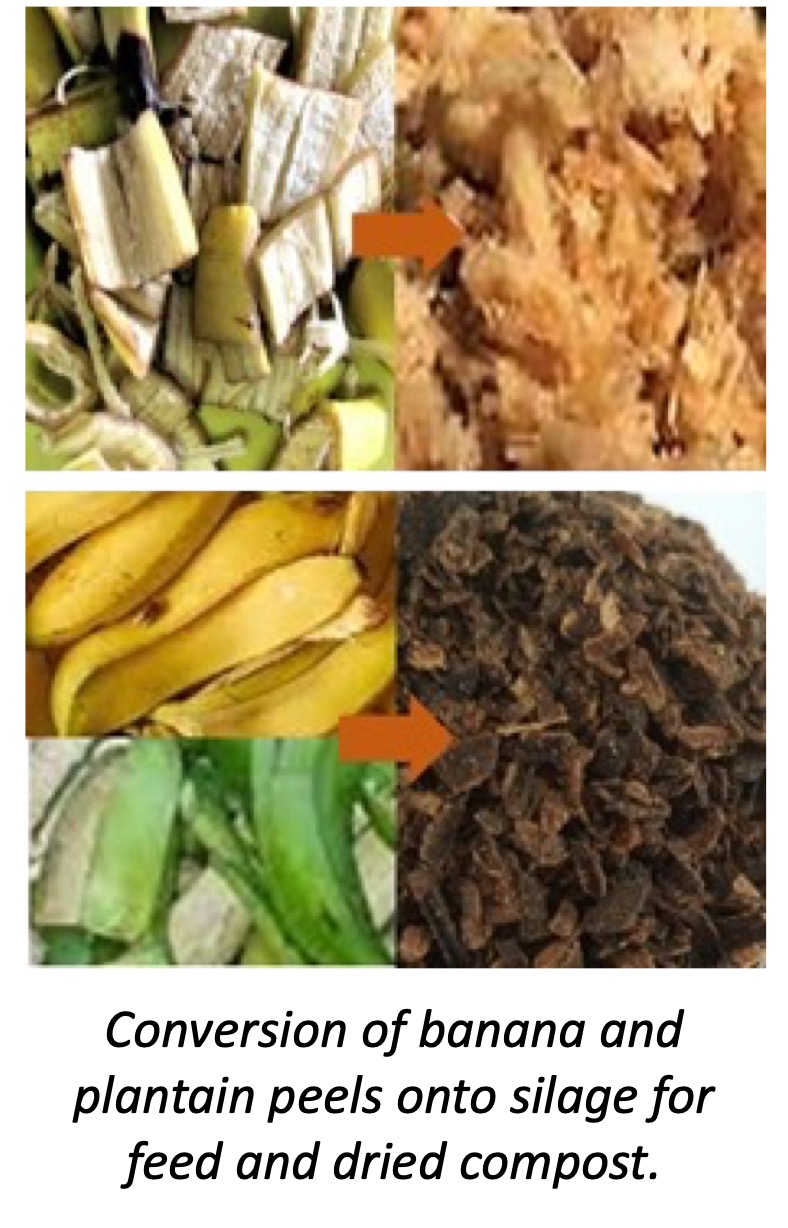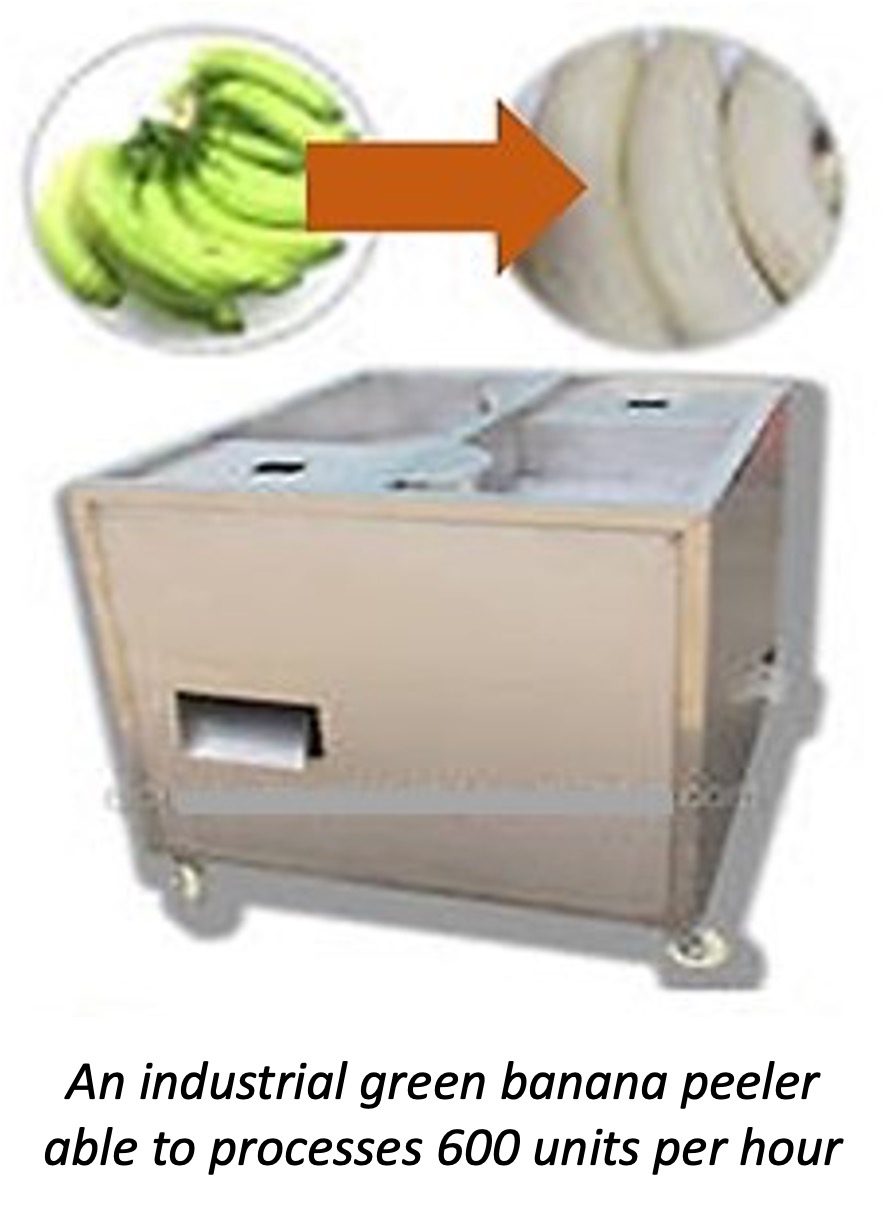Peels as Feed and Organic Resource
Résumé
Banana and plantain peels are the outer cover of the fruit that in itself has many uses. In bulk it is used as both an animal feed and an organic input to soil but there are concerns about its chemical composition and nutrient ratios. Techniques are available that allow for treatment such as silage and composting). Dried peels contain about 2% protein, 6% fat and 12% carbohydrates as well as substantial potassium, phosphorus, iron, calcium, magnesium, and sodium. Zinc, copper, and manganese occur in low concentrations. As a result, proper handling and supplementation of peels used as feeds are required but dried composts may be applied directly to soils without concern. In smaller quantities, peels are used as an ingredient in cooking, water purification, and manufacture of beauty and health products. Ironically, lack of understanding about the different values and processes surrounding peels results in their wasteful accumulation in some urban areas.
En savoir plus sur la solution
Huge quantities of the peels are produced where plantain or cooking banana are staples. The peel constitutes approximately 40 percent of the fruit, resulting in massive wastes. There are several methods to remove a peel from a banana. The peel from ripe fruit is easily shed and discarded as a single unit, whereas the peel from green fruit must be stripped away. Once the peel is removed, the fruit can be consumed fresh or cooked while the peel is too often discarded. The peels of green bananas and plantains are difficult to remove but machinery is available for this purpose.
The greatest potential for use of banana and plantain peels is as an animal feed. Peels have numerous attributes that make them suitable as a component of combined diets. Use of raw peels in poultry feed is restricted because of the deleterious effects of tannins and oxalate, and sun drying reduces it to safe levels. These anti-nutritional compounds cause a bitter taste to the peel and can result depressed growth and reduced feed efficiency; but these peels may be processed to detoxify unwanted effects. Most common is sun drying for four or five days. Sun drying binds tannins into insoluble forms and greatly reduces the moisture content (e.g. to 10%). This effect is also achieved through oven drying or treatment with alkali. Fermentation by silage also de-toxifies peels in part through microbial assisted oxidation.
Fresh peels have a high moisture content (about 85%), allowing animals to remain hydrated. Dried peels are rich in starch, contain less fiber than forage grasses (about 30%), and offer several vitamins. These peels are high in tannin that can result in feed refusal and result in meat with a lighter color, but sugars in the peel result in increased rumen activity. Note that the crude protein content of banana peels is quite low and this feed must be supplemented for optimal animal performance. Carbohydrate contents are greater than 50% and allow unripe banana peel to serve as an energy source in many animal diets. Potassium is particularly abundant in unripe plantain peels (e.g. 750 mg/kg) and increases further during ripening process. Unripe peel contains higher calcium and iron than the ripe peel. Green plantain peel contains mostly starch while green banana peel contains more free sugars.
In many cases, it is more advantageous to prepare silage from peels and other banana wastes. Peels are chopped and packed into airtight storage to encourage lactic acid fermentation. This allows conversion of sugars into lactic acid, lowering pH and inhibiting microorganisms that would otherwise spoil the material. Better silage results from adding additional energy-rich materials such as molasses, and ensuring that containers remain airtight. The ensiling period for raw banana peels without any additives is about 28 days, but addition of sugar reduces that to 24 days. Composting banana peels requires only 3 to 4 weeks under ideal conditions. Peels are best mixed with other compost ingredients to achieve the best results. Peels need not be chopped before composting. Banana peels are particularly well suited to vermicomposting (with earthworms) but not in combination with poultry manure. Composts prepared from peels are best dried before use and are suitable as mulch as well.
Commercialisation
Disponible dans le commerce
Images de la Solution
Institutions



